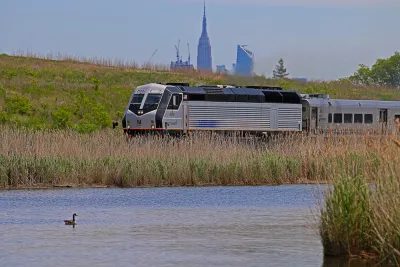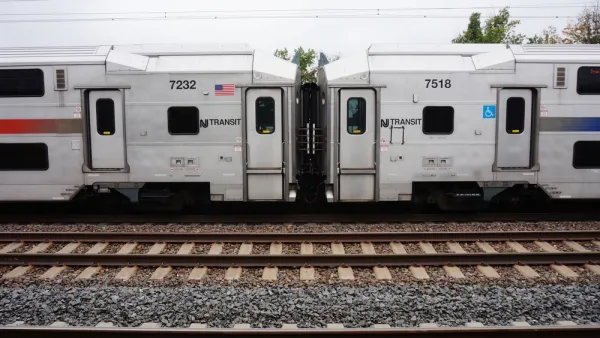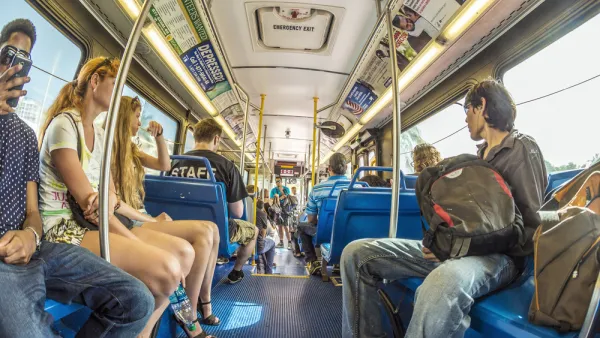U.S. commuter rail systems, primarily designed to bring workers to and from central business districts, must adapt to serve a broader population as the traditional workday changes.

"The future of America’s commuter rail model, including its heavy staff levels, is in doubt because of COVID-19," writes Jake Blumgart in Governing. "U.S. regional rail systems," which "have long been oriented toward suburban white-collar commuters," suffered massive revenue losses as commuting slowed to a trickle. "In the long term, it is projected that remote work will remain much more common, even after the pandemic eases. That means the core demographic for commuter rail could either continue to work from home or only come into the office a few days per week."
To adapt, commuter rail systems have started adding more frequent non-peak hour service and greater frequencies, but agencies are hindered by high labor and infrastructure costs. "One of the biggest is inefficiently allocated labor costs. American commuter rail systems operate on an antiquated model, employing not just engineers who drive the train but multiple conductors who punch tickets and help passengers on from platforms that are (in many cases) much lower than the train doors. For example, the staffing levels on the Berlin S-Bahn, the German capital city’s regional rail network, are about one-third the size of the Long Island Rail Road (America’s busiest commuter rail system), which in turn serves only about a third of the passengers." Other problems include the "antiquated practices" such as inefficient diesel locomotives, "low-level platforms that don’t allow for easy boarding," and a much higher per-kilometer cost than European rail systems.
"But advocates of enhanced service argue that these infrastructural challenges are not as big as transit agencies are claiming. In an era when the federal government has been providing unprecedented support to mass transit and Congress is debating the largest infrastructure spending initiative in modern memory, there may be fiscal room to maneuver."
FULL STORY: Commuter Rail Reform Faces High Labor, Infrastructure Costs

National Parks Layoffs Will Cause Communities to Lose Billions
Thousands of essential park workers were laid off this week, just before the busy spring break season.

Retro-silient?: America’s First “Eco-burb,” The Woodlands Turns 50
A master-planned community north of Houston offers lessons on green infrastructure and resilient design, but falls short of its founder’s lofty affordability and walkability goals.

Delivering for America Plan Will Downgrade Mail Service in at Least 49.5 Percent of Zip Codes
Republican and Democrat lawmakers criticize the plan for its disproportionate negative impact on rural communities.

Test News Post 1
This is a summary

Test News Headline 46
Test for the image on the front page.

Balancing Bombs and Butterflies: How the National Guard Protects a Rare Species
The National Guard at Fort Indiantown Gap uses GIS technology and land management strategies to balance military training with conservation efforts, ensuring the survival of the rare eastern regal fritillary butterfly.
Urban Design for Planners 1: Software Tools
This six-course series explores essential urban design concepts using open source software and equips planners with the tools they need to participate fully in the urban design process.
Planning for Universal Design
Learn the tools for implementing Universal Design in planning regulations.
EMC Planning Group, Inc.
Planetizen
Planetizen
Mpact (formerly Rail~Volution)
Great Falls Development Authority, Inc.
HUDs Office of Policy Development and Research
NYU Wagner Graduate School of Public Service





























